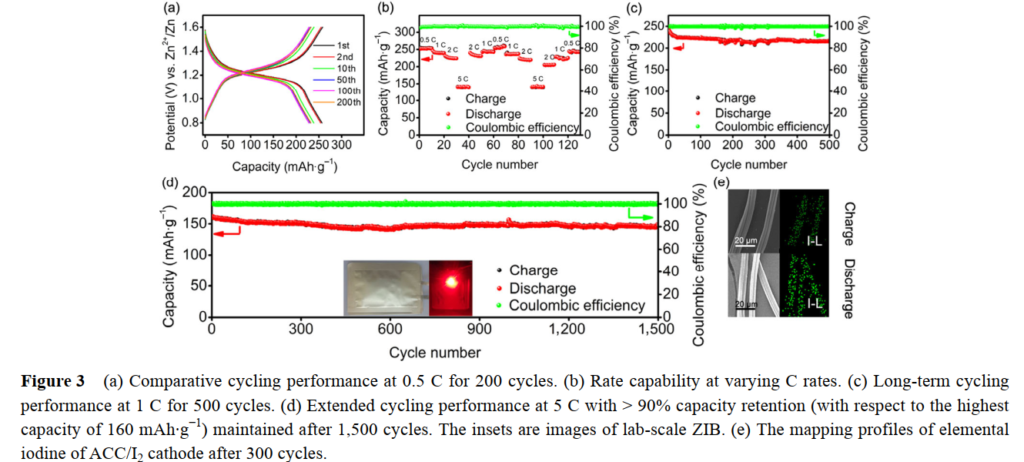In late 2020, I stopped my work on Zn-Br batteries because I decided to move out to the US and back to my home country. Because of the entire move and the pandemic, I didn’t have the time to continue my journey in the research of home batteries. However, I am now fully settled back home and have all my equipment ready to start testing batteries again.
However, I decided against continuing the development of Zn-Br batteries, due to issues I posted on a forum (read here). In summary, the issues with Zn-Br batteries are not something I believe I can surmount or better understand in a DIY environment. The solutions I explored, all involved big compromises between different aspects of the battery that all seemed very unattractive to me. Best of luck to all of you who wish to continue doing experiments using Zn-Br chemistry.

However, there is no shortage of exciting chemistries in the world of Zn aqueous batteries. After doing a thorough review of the current literature, I have decided to start researching Zinc-Iodine batteries, which have achieved some milestone development during the past 3 years, and that should be easy to test in a DIY environment.
My first goal will be to reproduce the results shown in this paper. These researchers use nothing fancy, a highly conductive, high surface area activated carbon that is loaded with iodine as a cathode, a zinc sulfate electrolyte, and a zinc anode.
Given that I have a GFE-1 cathode material (see here), I will try loading it with elemental iodine by sublimation. I will then use a glass fiber separator, 1M ZnSO4 solution as the electrolyte and a 0.2mm Zn plate as the anode. Wish me luck!
Good luck with the new direction towards an Iodine based battery! 🙂
Thanks, I believe I’m going to need it!
Looks like someone has cracked the Zinc Bromine problem and is entering commercial production of non flow batteries https://www.pv-magazine-australia.com/2021/09/10/how-zinc-bromide-innovators-gelion-found-a-way-to-cheaply-manufacturer-batteries-in-australia/
Thanks for your comment Stuart. I’ve commented about this company quite extensively. Yes, they have proved you can make Zn-Br work if you go to complex enough means. If you look at gelion’s patents you’ll see that it is no walk in the park. It is not just two electrodes in a jar, it is a complex set of gels involving custom designed ionic liquids to carefully solve all the problems of the chemistry. Certainly not anything that you could DIY and certainly far above the price point per kWh of FeLiPO4 batteries.
So yea, they have “solved” the problem, in the sense that they have engineered a Zn-Br setup that works. But this isn’t the type of battery people think about when they think about Zn-Br “jar” batteries.
Yes I have seen the patent https://patents.google.com/patent/EP3103156A1/en ;yes it has taken sometime for them to work through the chemistry however price point will be less than FeLiPO4 according to documentation released so far (it will need to be as these batteries still have some draw backs if compared directly to FeLiPO4). I think that to DIY a battery for home use, that bang for buck lead acid is still very hard to beat . Simple to make (the dangers of working with lead acid are well known) and power density wise, for home solar storage Plante cells are a good option. Without the complication of Faure lattice plates .It remains to be seen if someone can get a carbon/zinc/Aluminum/Bromine/Iodine or any other chemistry to work for DIY and I look forward to what lays ahead.
I think they will not be able to deliver a price point lower than FeLiPO4, given the cost of the materials they require. Up until now they have just talked about their price point but they still don’t have any products to offer. My guess is they will be at a price of around 5x FeLiPO4 per kWh, if you consider the bulk cost of materials they need.
This is not the only company with a commercial Zinc Bromine non flow product. Have you seen Eos Znyth® technology ,patent protected by US 10,892,524 (Electrolyte for rechargeable electrochemical cell), US 10,276,872 (Electrolyte for rechargeable electrochemical cell), US 10,305,111 (Terminal assembly for bipolar electrochemical cell or battery) using a liquid electrolyte . I wait with interest to see the price point. Keep up the good work; lots of potential in this field.
I have read through all of the post. Yes, building DIY is not easy. I too indeed working on the same and stuck with generation of Hydrogen and increases alkalinity. I need help, how can we avoid generation of Hydrogen using any sequestering agent?
Any idea, till then will continue with prototyping.
Regards,
Anand